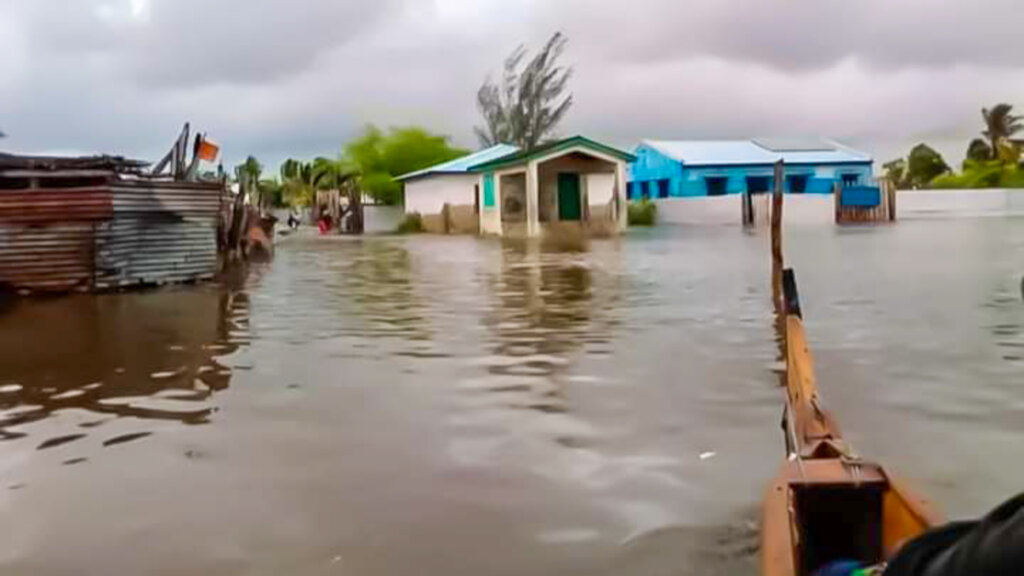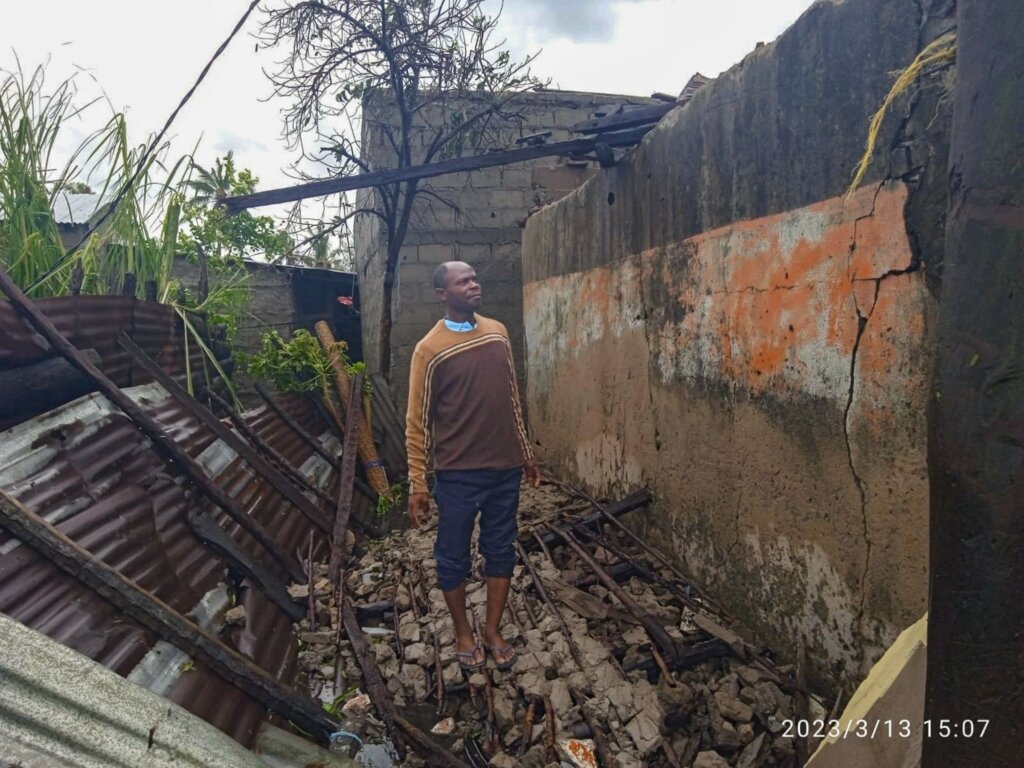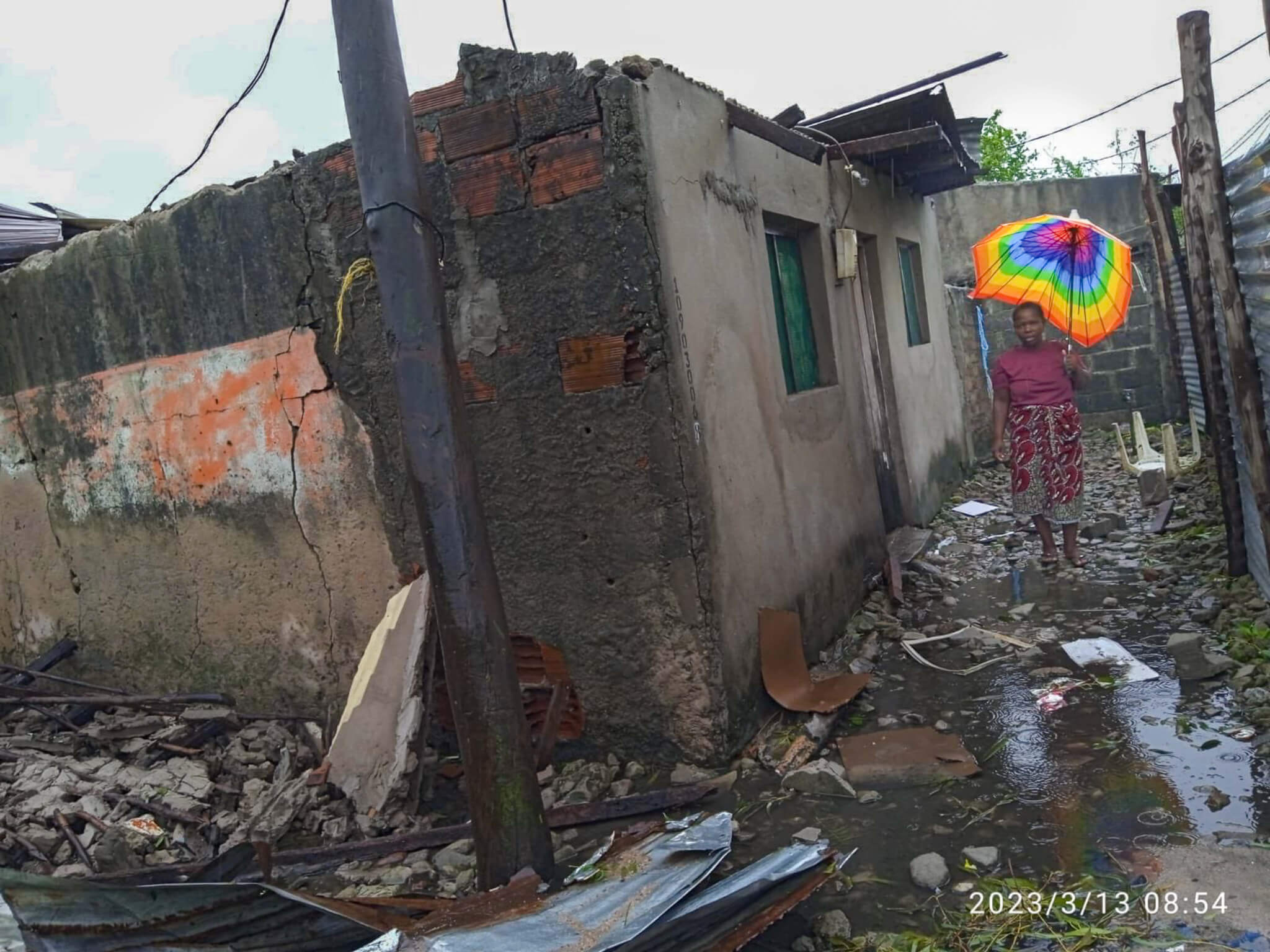The world has just witnessed the longest lasting and most energetic cyclone in recorded history.
Cyclone Freddy lasted 38 days and made four landfalls in three countries. It has killed hundreds, injured thousands, swept away homes, roads and schools and destroyed livelihoods in Madagascar, Mozambique, and Malawi.
Despite the devastation, the Church in each country is responding to the needs of those affected and will be there for the long term as communities rebuild.
A historic cyclone
Before Cyclone Freddy, the longest recorded storm was the 1994 Hurricane John which wreaked havoc in the Pacific for 31 days. Freddy also set a new record for Accumulated Cyclone Energy (ACE), which is how much energy a storm churns and reflects the duration and intensity of a storm. This storm reached 86 ACE points, in comparison the previous record was set by Hurricane and Typhoon Ioke in 2006 with 85.26 ACE points.
First landfall in Madagascar
Cyclone Freddy first developed off the northwest coast of Australia on 4 February, where it rapidly intensified to a Category 4 severe tropical cyclone. As Cyclone Freddy moved westward across the Indian Ocean it intensified further, making its first landfall on the eastern coast of Madagascar, near Mananjary, on 21 February.

Flooded crops in Madagascar. Photo: Diocese of Toliara.
It landed with average winds of 130 km per hour (km/h), and gusts of 180 km/h, causing a storm surge and ripping roofs off houses and critical infrastructure, including schools. At least seven people died from its impact and 11,000 were displaced by the storm’s passage. More than 4,500 houses were flooded or damaged in Vatovavy region, according to estimates from the National Bureau of Risk and Disaster Management in Madagascar.
First landfall in Mozambique
The storm continued its trajectory inland across Madagascar, emerging in the Mozambique Channel during the evening of 22 February. Here, it gradually intensified again before making landfall in Inhambane Province of Mozambique on 24 February with winds of 95 km/h. Over 25 February, it weakened to a tropical storm with winds of 55km/h.
This landfall impacted 239,000 people among whom 10 were killed by the floods. Considerable damage to infrastructure was reported as more than 22,000 houses were affected and almost 14,000 destroyed. Sixty health units were flooded and 1,265km of roads were damaged. Food production was also affected as 92,000 hectares of crops were destroyed.
Second landfall in Madagascar

Flooding in Toliara. Photo: Diocese of Toliara.
Despite weakening, Cyclone Freddy was not over. After its passage over Mozambique, it returned to the Mozambique Channel on 1 March, now strengthened to a severe tropical storm, and moved towards the south-western coast of Madagascar, where it brought heavy rains to the city of Toliara and surrounding areas.
The Anglican Diocese of Toliara reported that the cyclone “has returned to Toliara and hit the Diocese badly. The Cathedral is flooded, the churches in Ambohimahavelona and Analaiva have collapsed and many homes have been destroyed …. Flood water is rising in Morondava.” Ten people were reported dead from this second landfall, bringing total fatalities from the cyclone in Madagascar to 17.
“Freddy is having a major socio-economic and humanitarian impact on affected communities,” said Dr Johan Stander of the World Meteorological Organization (WMO). “The death toll has been limited by accurate forecasts and early warnings, and coordinated disaster risk reduction action on the ground – although even one casualty is one too many”. WMO said they were continuing to monitor the tropical storm, which had “cut a destructive path across the two countries” as it moved away from Madagascar and was expected to intensify into a cyclone and move again towards Mozambique.
Second landfall in Mozambique
As forecast, Cyclone Freddy intensified again, moved back across the Mozambique Channel and made its second landfall in Mozambique early in the afternoon of 11 March. It struck close to the coastal City of Quelimane in central-northern Mozambique, with maximum sustained winds of up to 175 km/h.

Padre Samuel Mankhaka looking at his destroyed house in Zambezia
In total, over 458,000 people have been directly affected by Cyclone Freddy in Mozambique: 143 have been killed, 477 injured and 72,626 displaced. Besides its impact on people, the storm also totally destroyed 77,463 houses, partially destroyed 39,337, destroyed 64 health units, 2,840 classrooms, 2,151 kilometres of road, 30 bridges, and swept away 282,592 hectares of crops.
Catastrophic impacts in Malawi
As it moved between Mozambique and Madagascar, Cyclone Freddy had not been expected to impact Malawi. However, on its rebound to Mozambique, it moved north-west inland over the Tete Province and then turned south-east towards southern Malawi and Zambezia Province in Mozambique.
The Malawian Department of Climate Change and Meteorological Services (DCCMS) projected that Tropical Cyclone Freddy would hit Malawi and that impacts of torrential rains and damaging winds were imminent over southern areas.
On 13 March, this forecast became a reality when the cyclone caused torrential rains associated with gusty and intense winds in most parts of southern Malawi. Rainfall accumulation reached between 300mm and 400mm in 48hrs over southern Malawi. The wind intensity was around 80km per hour in some areas on the same day.
The results have been catastrophic. An update by Relief Web on 25 March based on a report from Malawi’s Department of Disaster Management Affairs says, “there are currently 563,771 people internally displaced residing in 577 camps, 511 deaths have been reported, at least 1,724 people are injured, while 533 people are still missing”. In addition, 194,500 livestock have died and nearly 91,000 injured, while over 204,800 hectares of land have been submerged or washed away. Cyclone Freddy has damaged or destroyed well over 500 schools, affecting over a quarter of a million students. Over 400 schools are currently being used as camps and over 700 classrooms are hosting displaced people. Roads, bridges and other infrastructure have been damaged or washed away.
The President of Malawi, Lazarus Chakwera, declared a state of emergency in the affected districts on 13 March and appealed for humanitarian assistance from both the local and international communities to alleviate the suffering of thousands of homeless people lacking necessities.
How the local churches are responding
The Anglican Council in Malawi has developed a plan to respond to the humanitarian needs arising from the disaster in all its affected dioceses.
Bishop Alinafe Kalemba of the Anglican Diocese of Southern Malawi reported, “The preliminary assessment indicates that the most urgent and pressing needs for the affected people is food, beddings, shelter, kitchen utensils, plastic papers (sheeting) for simple shelters, toilets, sanitary products, and clean water. Most houses were completely damaged while some partially damaged”.
The Church plans to support up to 5,000 most affected households from at least five affected districts. It plans to support at least 1000 households per district, for four months, with food items and non-food items in the emergency phase then follow up with seeds and livestock support in the recovery phase. The response aims at saving the lives of the flood victims and building the resilience of the affected households.
In Mozambique, the Primate of Igreja Anglicana de Mocambique e Angola (IAMA), Archbishop Carlos Matsinhe, has launched an appeal for humanitarian support to those impacted by the floods. The Church is seeking USD$60,000 to support needs in the four most affected dioceses of Zambezia, Rio Pungue, Niassa and Nampula. They are seeking to provide food, clothing, and sanitary materials.
In Madagascar, the Diocese of Toliara which was badly hit in Cyclone Freddy’s rebound, with many houses getting destroyed, is also appealing for support from friends and partners to provide food and shelter to families, reconstruct church buildings and support agricultural production of those whose farms were flooded leading to crop failures.
The Anglican Alliance’s role
The Anglican Alliance has been tracking Cyclone Freddy since it approached Madagascar. We have reached out to the bishops in the affected areas to offer solidarity and prayer. This has been appreciated by the bishops – an encouragement at this distressing time. We have also shared information through our social media channels as the cyclone approached and about its impact once it hit, requesting prayer.
The Anglican Alliance has also been liaising with partners to assess their capacity to support the response in the three countries. We will continue to accompany the churches in Madagascar, Mozambique and Malawi in their response and recovery from the disaster, through our Partners in Resilience and Response initiative.
This record-breaking cyclone with its prolonged and unusual trajectory has had devastating impacts on countries already coping with the aftermaths of previous extreme weather events. These are exactly the kinds of impacts expected from climate change and described in the Intergovernmental Panel on Climate Change reports. It is yet another startlingly clear example of why action on climate change is needed urgently and at scale.
The Anglican Alliance will continue its varied work on safeguarding creation, including advocacy for climate – and wider environmental – justice.
How you can help
Please continue to pray for the affected communities and their leaders in this time of distress and loss.
Please support the response through Communion companion links and agencies, such as Episcopal Relief & Development’s International Disaster Response fund: https://www.episcopalrelief.org/what-you-can-do/give/donate-now/individual-donation/
A Prayer for Rescue, Recovery and Relief workers
God our help and hope when waters rise,
you brought Israel safely through the sea.
Sustain all those who seek to save others,
so that they may repair the ruined cities,
raise up the former devastations,
and be the restorers of streets to live in;
through Jesus Christ, our eternal Saviour.
(based on Isaiah 58, 61)
Prayer in Times of Trouble
God of wind and water, stillness and storm,
your Spirit sweeps over the surface of the sea.
Give us faith to seek you in times of trouble.
Reach out your hand to us when we are sinking
so that we may believe and worship you;
through Jesus Christ, Sovereign and Saviour.
(based on Matthew 14:22-33)
Credit for prayers: Presbyterian Church of USA

